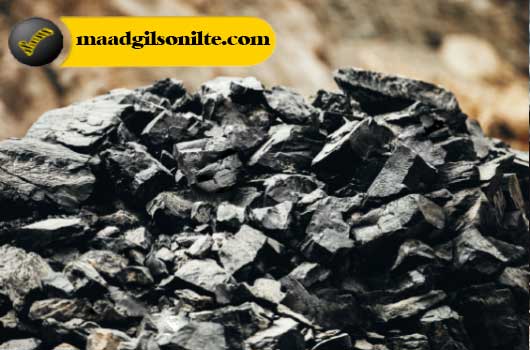
Mixing gilsonite or natural bitumen with refinery bitumen: Gilsonite, also known as natural bitumen, is a naturally occurring, shiny, black, hard hydrocarbon. It has been used for many years in various industrial applications due to its unique properties. On the other hand, refinery bitumen is a byproduct of the crude oil refining process and is commonly used in road construction and maintenance, roofing, and waterproofing applications.
Blending Gilsonite or natural bitumen with refinery bitumen has gained popularity in recent years due to the significant improvements it provides in the performance and durability of asphalt mixtures. This paper provides an overview of the blending process of gilsonite with refinery bitumen and highlights the benefits, challenges, techniques and applications of using gilsonite modified bitumen in various industries.
Refinery bitumen, also known as asphalt or bitumen, is a black viscous liquid obtained from crude oil. It is widely used in the construction industry as an adhesive in asphalt mixtures for road construction and waterproofing applications. Refinery bitumen is characterized by high molecular weight and viscosity, which makes it an excellent adhesive.
The construction industry relies heavily on gilsonite and refinery bitumen for various applications. Gilsonite is used as an additive in asphalt mixtures to improve their performance and durability, while bitumen is a key component in the production of asphalt concrete for road construction and other infrastructure projects.
By mixing Gilsonite with refinery bitumen, the performance of asphalt mixtures can be significantly improved. Gilsonite has unique properties that increase the elasticity, adhesion and durability of asphalt mixtures and make them more resistant to deformation, cracking and moisture damage.
Gilsonite has a high carbon content, which makes it a very durable material. When mixed with refinery bitumen, it can improve the aging and oxidation resistance of the resulting asphalt mixtures, extending their useful life and reducing maintenance costs.
Rheological properties refer to the ability of a material to flow and deform under stress. Mixing Gilsonite with refinery bitumen can improve the rheological properties of asphalt mixtures and make them more resistant to deformation and cracking under heavy traffic loads.
Mixing Gilsonite with refinery bitumen can be challenging due to their different chemical compositions and physical properties. Achieving a smooth and uniform mix can be difficult, which can affect the performance and durability of asphalt mixes.
The chemical composition of Gilsonite and refinery bitumen can affect the compatibility and mixing process. The presence of impurities such as sulfur and nitrogen can affect the chemical reaction and performance of the resulting asphalt mixture.
Temperature and mixing conditions can also affect the mixing process. Mixing Gilsonite with refinery bitumen requires high temperatures to achieve a uniform and consistent mixture. Mixing time, temperature and cutting speed can affect the properties and performance of the resulting asphalt mixture.
Gilsonite particle size and concentration can affect the mixing process and the properties of the resulting asphalt mixture. The use of larger particles and higher concentrations of gilsonite can improve the performance of asphalt mixtures, but can also increase the risk of agglomeration or segregation.
To mix Gilsonite with refinery bitumen, you will need appropriate equipment and materials such as industrial mixer, asphalt melting machine and thermal kettle. Make sure you choose the right equipment and materials to avoid poor quality mixing.
Handling and storage of materials is necessary to ensure the quality of the final product. Be sure to store and store Gilsonite and refinery bitumen carefully to prevent contamination or degradation.
Before mixing Gilsonite with refinery bitumen, make sure surfaces are clean and free of debris and dust. You also need to heat the ingredients to the right temperature to ensure proper melting and mixing.
The wet process involves adding gilsonite to hot refinery bitumen and mixing them using high-shear mixing equipment. This technique allows uniform dispersion of Gilsonite particles in asphalt mixtures and can improve the rheological and functional properties of the final product.
The dry process involves then adding gilsonite powder to the aggregate mix and then mixing it with hot refinery bitumen. This technique requires precise control of powder concentration, particle size and mixing conditions to achieve a uniform and homogeneous mixture.
The mixing process involves pre-mixing Gilsonite with a small amount of refinery bitumen before adding it to the hot binder. This technique allows for a more uniform and consistent mixture and can improve the performance and durability of asphalt mixtures.
Gilsonite is classified as a natural material and its use in bitumen modification is controlled by various industry standards and regulations.
ASTM has developed standards to ensure the quality and consistency of Gilsonite-modified bitumen. ASTM D5727 specifies test methods and criteria for evaluating the compatibility of gilsonite with refinery bitumen, while ASTM D36 specifies the standard test method for bitumen softening point.
The use of Gilsonite in bitumen modification is subject to environmental regulations that govern the extraction, processing and disposal of materials. These regulations ensure that the use of Gilsonite does not have adverse environmental effects.
Gilsonite-modified bitumen must meet certain quality and safety standards to ensure its suitability for various applications. Quality standards include those set by the American Association of State Highway and Transportation Officials (AASHTO), while safety standards include those set by the Occupational Safety and Health Administration (OSHA).
Gilsonite-modified bitumen has been successfully used in various applications, demonstrating its performance and reliability.
A case study conducted in Utah demonstrated the effectiveness of using gilsonite-modified bitumen in asphalt pavements. This study showed that this material reduces pavement cracking, improves stiffness and increases pavement life, and reduces maintenance costs.
Gilsonite-modified bitumen has been used successfully in roofing applications, such as the restoration of the roof of the Philadelphia Museum of Art. The superior adhesion properties of this material allow for secure installation of the roof membrane and reduce the risk of leaks and water damage.
Gilsonite-modified bitumen has been used successfully in various waterproofing and sealing applications, such as lining and repairing pipelines in Colorado. The excellent resistance of this material to water and chemicals ensured the long-term durability of the pipeline and prevented leakage and corrosion.
While mixed bitumen offers benefits for various applications, it is important to consider both the cost and sustainability implications of using this material.
The cost of mixed bitumen depends on various factors, including the cost of refinery bitumen and Gilsonite or natural bitumen. In some cases, blended bitumen may be more expensive than other types of bitumen such as straight bitumen or polymer modified bitumen. However, the improved performance and durability of mixed bitumen may offset the higher cost for some applications.
Mixed bitumen may offer sustainability and environmental benefits depending on the bitumen sources used in the mix. Gilsonite and natural bitumen are generally more environmentally friendly than refined bitumen because they are natural products that require less processing and have a lower carbon footprint.
In addition, the durability and longer life of mixed bitumen can reduce the environmental impact associated with frequent maintenance and replacement of pavement and roofing materials. As a result, mixing Gilsonite or natural bitumen with refinery bitumen can greatly improve the quality and performance of bituminous materials used in industry.
Various construction and industrial applications By following the preparation, mixing and quality control steps outlined in this article, construction professionals can ensure the production of high-quality mixed bitumen that meets industry standards and regulations. With the added benefits of increased durability and sustainability, mixed bitumen types are a cost-effective and environmentally friendly solution for a wide variety of construction projects.
Gilsonite modified bitumen is an effective and reliable material that offers numerous advantages in various applications. Its compatibility with refinery bitumen, along with its superior properties, make it an ideal choice for increasing the durability, hardness, and cracking resistance of asphalt pavements, roofing membranes, and other applications.
Bitumen modified by mixing Gilsonite is an effective and reliable material that offers several advantages in various applications. The use of materials is controlled by industry standards and regulations to ensure its quality, safety and environmental sustainability.
Further research and development is necessary to explore the full potential of gilsonite-modified bitumen. Future studies should focus on optimizing material properties and identifying new applications to improve the sustainability and effectiveness of infrastructure projects.
As a result, mixing Gilsonite or natural bitumen with refinery bitumen is a promising solution to increase the performance and durability of asphalt mixtures. . With proper mixing techniques and conditions, Gilsonite-modified bitumen can provide improved rheological properties, resistance to aging and oxidation, and better adhesion to aggregates.
As such, there is a growing interest in the use of Gilsonite-modified bitumen in a variety of industrial applications, from asphalt pavements to roofing and waterproofing materials. In the future, more research and development is needed to explore the full potential of Gilsonite-modified bitumen and ensure compliance with industry standards and regulations.
One of the main challenges of mixing Gilsonite and refinery bitumen is achieving a homogeneous mixture due to the chemical and physical differences between these two materials. Addition of gilsonite can also increase bitumen viscosity, which may require adjustment of temperature and mixing conditions. In addition, the use of gilsonite-modified bitumen may require compliance with environmental regulations and industry standards, which can increase the cost of production.
The American Society for Testing and Materials (ASTM) has developed several standards for testing and evaluating gilsonite-modified bitumen, including ASTM D7496, ASTM D7564, and ASTM D6154. These standards cover various aspects of material properties, performance and production.
In addition, the use of gilsonite-modified bitumen may require compliance with environmental regulations, such as those set forth by the Environmental Protection Agency (EPA) and the Occupational Safety and Health Administration (OSHA).
Gilsonite has unique physical and chemical properties that help improve performance
The process of mixing Gilsonite or natural bitumen with refinery bitumen includes various steps such as preparing materials, heating the base bitumen, adding Gilsonite, mixing and homogenizing, and cooling and storing the mixed bitumen. During this process, several quality control measures must also be implemented to ensure the production of high-quality mixed bitumen that meets industry standards and regulations.
Click on the link to read the Gilsonite exploration and geology article.

